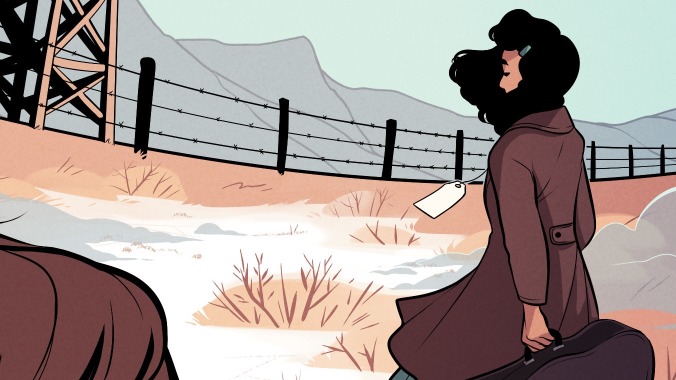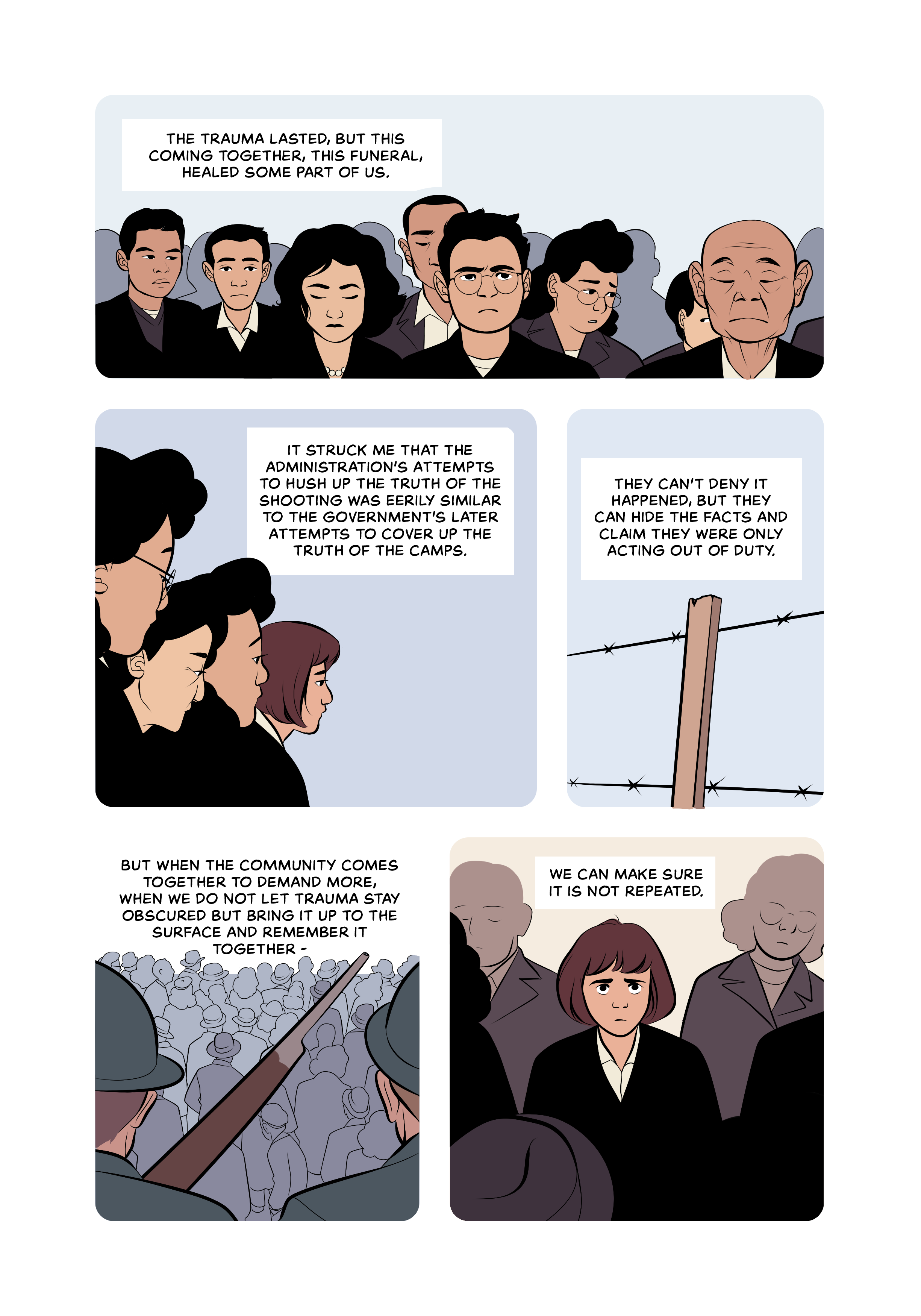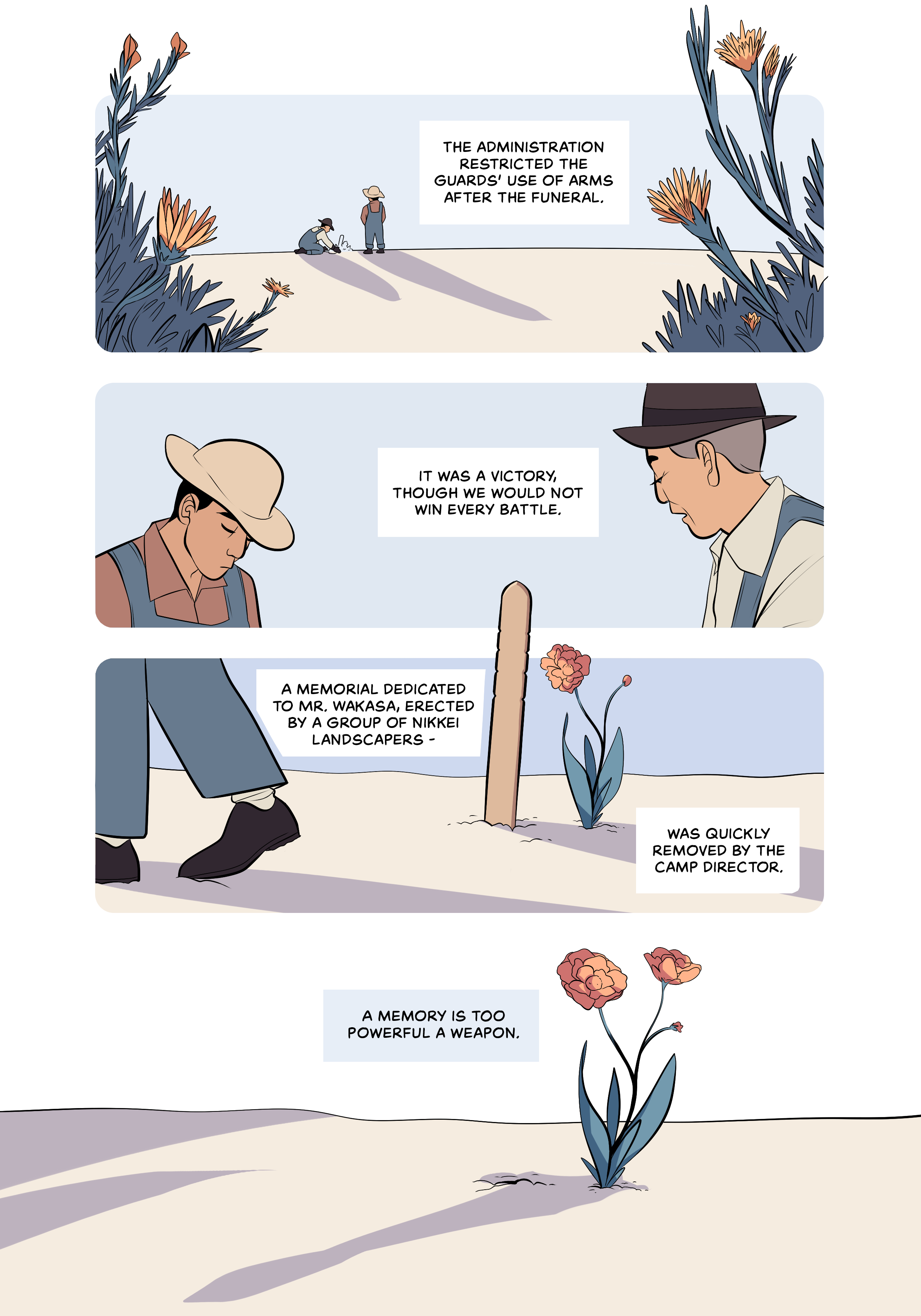This Displacement first look sends a cartoonist into her family’s tragic past


There’s no way to fully comprehend historical atrocities when you learn about them in school. There’s the distance of time and the reinterpretation of events for academic texts, diminishing the personal impact of past horrors to place them in a larger historical context. The atrocities committed by the United States are especially downplayed in American schools, with American exceptionalism rewriting the past to paint the country in the best light. The internment of Japanese-American citizens during World War II is one of those horrific acts, and Kiku Hughes’ debut graphic novel from First Second, Displacement, examines her family’s history through a time-travel story that sends the cartoonist into her ancestor’s traumatic, dehumanizing experience.
In Displacement, on sale August 2020, a vacation to San Francisco in the present sends Hughes bouncing back and forth through time, eventually getting stuck in the internment camp where her late grandmother was forcibly relocated. “Displacement is a book about America’s past,” says Hughes, “but it’s also about our present, and how closely the two are tied. Our government is forcing people, including children, into concentration camps yet again. Again, it is based on racist hysteria and cruel politics. I hope this book can help people understand the far-reaching and long-lasting effects of these camps, and motivates them to do their part to end the injustices being committed against Latinx and Muslim communities today.”
This exclusive first look at Displacement’s cover and interior pages accentuates the bleakness and desolation of the camp, with a cover that spotlights Hughes’ sadness as she looks back at her grandmother facing the guard tower and barbed wire fence. Hughes packs these five pages with emotion as she depicts a funeral for a man killed in the camp, opening with a splash page that reinforces both the somber atmosphere and the unity that rises in the wake of this tragedy. Hughes uses floral imagery here to represent the power of memory, and even though those in power may try to erase evidence of this suffering, this community will keep the memory of this tragedy alive in hopes of stopping it from ever happening again.




